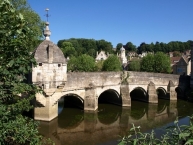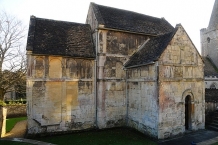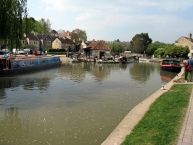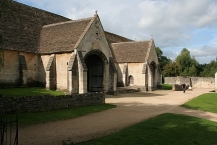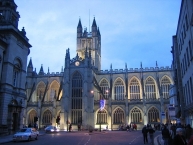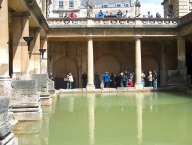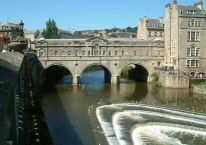Cycle Route Bath - Radstock - Frome - Warminster - Salisbury - Eastleigh
No. of cycle route 24
Actions
![]()
Please wait - map data are loading
Added on 04 Oct 2012,
last edited by biroto-Redaktion on 13 Jan 2021
Actions
Cycle route metrics
Total distance in km
124
Information about rights to the gps-track data | |
|---|---|
Rights owner | OpenStreetMap and Contributors + biroto-Redaktion (biroto.eu) |
Rights characteristic / license | Contains information from OpenStreetMap, which is made available here under the Open Database License(ODbL) |
Link to the description of the license | |
GPX file taken from | |
GPX file uploaded | by biroto-Redaktion on 13 Jan 2021
|
Track points in total
2.246
Track points per km (avg)
18
Start/endpoint
Start location
Claverton, England, GB (35 m NHN)
End location
Eastleigh, England, GB (16 m NHN)
Beds4Cyclists, worth visiting and infrastructure
Name and address
Latitude / Longitude
Phone
Fax
Mobile
Type of accommodation
Rating for cyclists
Route km
Dist. to route
Elevation
0 km
4,4 km
30 m
Information about copyright | |
|---|---|
Rights owner | |
Rights characteristic / license | by-sa: CREATIVE COMMONS Attribution-ShareAlike |
Link to the description of the license | |
Image taken over from | |
Image has been uploaded | by biroto-Redaktion on 07 Mar 2020
|
Information about copyright | |
|---|---|
Rights owner | https://commons.wikimedia.org/w/index.php?title=User:Landlinegraphics |
Rights characteristic / license | by-sa: CREATIVE COMMONS Attribution-ShareAlike |
Link to the description of the license | |
Image taken over from | https://commons.wikimedia.org/wiki/File:Bradford_on_Avon_Saxon_chapel_from_N.jpg |
Image has been uploaded | by biroto-Redaktion on 07 Mar 2020
|
Information about copyright | |
|---|---|
Rights owner | |
Rights characteristic / license | by: CREATIVE COMMONS Attribution |
Link to the description of the license | |
Image taken over from | https://commons.wikimedia.org/wiki/File:Bradford_on_Avon_Wharf.jpg |
Image has been uploaded | by biroto-Redaktion on 07 Mar 2020
|
Information about copyright | |
|---|---|
Rights owner | |
Rights characteristic / license | by-sa: CREATIVE COMMONS Attribution-ShareAlike |
Link to the description of the license | |
Image taken over from | https://commons.wikimedia.org/wiki/File:Tithe_Barn,_Bradford-on-Avon_-_geograph.org.uk_-_1463414.jpg |
Image has been uploaded | by biroto-Redaktion on 07 Mar 2020
|
Bradford on Avon is a small country town in England between Bath ![]() and Trowbridge
and Trowbridge ![]()
Understand
Built in the same fine oolite limestone as Bath, the town was already a settlement in the Iron Age, and people have been living there ever since. The foundations of a large Roman villa - the centre of an estate many miles across - were recently found in the grounds of the town's secondary school, and it has one of England's few surviving Saxon churches and a magnificent medieval Tithe Barn, crowned with one of the largest stone roofs in the country. But the handsome buildings which climb up the hills from the 'broad ford' (and, since Norman times, the bridge) across the river are mostly Georgian, the legacy of a few hundred years of prosperity as a centre of a textile industry making fine woollen cloth from Cotswold sheep. Towards the end of the Georgian period the industry and its money moved north to Yorkshire and Lancashire, and building largely stopped for around 100 years. The old textile mills were taken over in the 20th century by the rubber industry, making goods like tyres (and the small-wheeled Moulton bicycles, briefly famous in the 1960s and 70s as town runabouts), but that too eventually moved away. Today Bradford is largely a residential town.
See
Bradford-on-Avon is a very pretty town and has lots of old buildings and lots of history. It is good for sight-seeing and a peaceful day out. Bradford-on-Avon is also close to the city of Bath, which is also known for its sights.
- ⊙Courts Garden, Holt, BA14 6RR (3 miles east of Bradford on Avon), ☎ +44 1225 782875.
- ⊙Westwood Manor, Westwood, BA15 2AF (3 miles south west of Bradford on Avon), ☎ +44 1225 863374.
- ⊙Great Chalfield Manor, near Melksham, SN12 8NH (3 miles north east of Bradford on Avon), ☎ +44 1225 782239.
- ⊙Bradford on Avon Tithe Barn, Pound Lane, Bradford-On-Avon, Wiltshire, BA15 1LF. Daily 10:30AM-4PM. A spectacular 14th-century monastic stone barn, 51 metres long, with an amazing timber cruck roof. Free.
(updated Mar 2018)
Information about copyright | |
|---|---|
Rights characteristic / license | by-sa: CREATIVE COMMONS Attribution-ShareAlike |
Link to the description of the license | |
Input taken over from: |
Wikivoyage contributors, 'Bradford on Avon', Wikivoyage, The FREE worldwide travel guide that anyone can edit, 15 June 2019, 13:32 UTC, https://en.wikivoyage.org/w/index.php?title=Bradford_on_Avon&oldid=3796848 [accessed 7 March 2020] |
taken over / edited on | 07 Mar 2020
|
taken over / edited by |
|
2 km
3,4 km
28 m
Languages spoken:
English
2 km
3,6 km
17 m
2 km
3,5 km
29 m
Information about copyright | |
|---|---|
Rights owner | |
Rights characteristic / license | by-sa: CREATIVE COMMONS Attribution-ShareAlike |
Link to the description of the license | |
Image taken over from | https://commons.wikimedia.org/wiki/File:Bathabbey_at_night_amcm.jpg |
Image has been uploaded | by biroto-Redaktion on 09 Mar 2017
|
Information about copyright | |
|---|---|
Rights owner | |
Rights characteristic / license | cc0: Public Domain no Rights reserved |
Link to the description of the license | |
Image taken over from | https://commons.wikimedia.org/wiki/File:Römisches_Bad_in_Bath.JPG |
Image has been uploaded | by biroto-Redaktion on 09 Mar 2017
|
Information about copyright | |
|---|---|
Rights owner | |
Rights characteristic / license | by-sa: CREATIVE COMMONS Attribution-ShareAlike |
Link to the description of the license | |
Image taken over from | https://commons.wikimedia.org/wiki/File:Bath_Pulteney_Bridge.JPG |
Image has been uploaded | by biroto-Redaktion on 09 Mar 2017
|
Bath is a historic Roman and Georgian spa city. It is a World Heritage Site, situated 100 miles west of London and 15 miles (25 km) south-east of the nearest big city, Bristol ![]() . Bath is famous for its hot springs, Roman period baths, Medieval heritage and stately Georgian architecture. Set in the rolling Somerset countryside on the southern edge of the Cotswolds, Bath (population 80,000+) offers a diverse range of attractions for its 4.4 million visitors each year: restaurants, theatres, cinemas, pubs and nightclubs, along with interesting museums, and a wide range of guided tours.
. Bath is famous for its hot springs, Roman period baths, Medieval heritage and stately Georgian architecture. Set in the rolling Somerset countryside on the southern edge of the Cotswolds, Bath (population 80,000+) offers a diverse range of attractions for its 4.4 million visitors each year: restaurants, theatres, cinemas, pubs and nightclubs, along with interesting museums, and a wide range of guided tours.
Understand
History
Bath is among the oldest of England’s principal tourist destinations and has been welcoming visitors for centuries. The three hot springs within the city were sacred to the Celtic goddess Sulis, whom the Romans later identified with the goddess Minerva. Bath first achieved its status as a sacred spa site with the growth of the Roman settlement Aquae Sulis around the thermal springs. The Roman period saw a vast complex of baths constructed - the remains of these were re-discovered in the 18th century and helped fuel Bath's modern revival as a luxury resort.
Bath was a prosperous city in the Medieval period, the site of an Abbey and Cathedral (under the Bishop of Bath and Wells). The Reformation under Henry VIII saw some uncertainty emerge in Bath's future, although the reign of Elizabeth I saw the first revival of the town as a spa resort. It was during the Georgian period, however, that Bath came once again into its own. Exceedingly fashionable, Bath was laid out in stately avenues, streets and crescents, encrusted with Neo-Classical public buildings.
Bath suffered a significant amount of damage during air raids in World War II. The prestigious crescents and terraces were relatively unscathed and restored where necessary, but some of the more minor Georgian and Victorian streets were demolished both after the war and during a later ill-conceived phase of development known now as the "Sack Of Bath". Consequently some modern buildings pop up in unexpected places, and the locals are generally very opposed to any major building developments that are put forward. In 2011 some of those works are substantially complete with a brand new shopping centre near the railway station recently opened.
See
Landmarks
- ⊙Roman Baths, Stall St, BA1 1LZ, ☎ +44 1225 477785. 09:30-17:30 (Nov-Feb), 09-18:00 (Mar-Jun,Sep-Oct), 09-22:00 (Jul-Aug). Built by the Romans around 2000 years ago, and later rediscovered by the Victorians, the Roman Baths are the must-see tourist attraction in Bath. The baths are fuelled by England's only mineral hot springs
 , outputting over a million litres of hot water each day. You can wander the rooms that made up the baths, including the large open air 'Great Bath', see Roman, medieval, and Georgian architecture, and learn about the history of Bath Spa. The Baths are superbly maintained and the exhibits are filled with eye-popping archaeology. Make sure you get a taste of the "bath" water from the pump in the Georgian Pump Room restaurant. £14/adult, £11.75/seniors, £8.80/child.
, outputting over a million litres of hot water each day. You can wander the rooms that made up the baths, including the large open air 'Great Bath', see Roman, medieval, and Georgian architecture, and learn about the history of Bath Spa. The Baths are superbly maintained and the exhibits are filled with eye-popping archaeology. Make sure you get a taste of the "bath" water from the pump in the Georgian Pump Room restaurant. £14/adult, £11.75/seniors, £8.80/child.
Come out of the Roman Baths and you will see:
- ⊙Bath Abbey, 12 Kingston Buildings, BA1 1LT, ☎ +44 1225 422462. M 09:30-18:00, T-Sa 09-18:00, Su 13-14:30/16:30-17:30. The last Gothic church in England, started in 1499 and built on the ruins of the former Norman cathedral, this impressively large church (of small cathedral proportions) is located next to the Roman Baths. A place of Australian pilgrimage: Arthur Philip, first Governor of New South Wales
 and founder of the city of Sydney
and founder of the city of Sydney  has his burial and memorial within the Abbey. A wonderful view of Bath can be had with a trip up the Abbey tower (tours hourly, £6/adult, £3/child). free.
has his burial and memorial within the Abbey. A wonderful view of Bath can be had with a trip up the Abbey tower (tours hourly, £6/adult, £3/child). free.
Come out of the main Abbey door, turn right and follow the pavement round the corner past the statue of "The Lady With The Pitcher". Pass some bookshops and a shop selling Bath Aqua Glass and cross the road to the entrance to Parade Gardens. Then follow the road to the left to see:
- ⊙Pulteney Bridge & Pulteney Weir. Was designed by Robert Adam completed in 1773. It is one of only four bridges in the world with shops across the full span on both sides and overlooks the impressive Pulteney Weir. Tourist trips by boat leave from the Weir during summer months.
Cross Pulteney Bridge to see:
- Great Pulteney Street. Quintessential Georgian street on the other side of Pulteney Bridge. Film location for 2005's 'Vanity Fair' (the Reese Witherspoon version). Made for casual strolling past the Laura Place fountain, down to the Holborne Museum, around Sydney Gardens, then back up Great Pulteney Street. Below Great Pulteney Street is the Recreation Ground, home of the Bath rugby union club.
Go back in the direction of the Parade Gardens to catch a Hop On Hop Off Tourist bus to take you to:
- ⊙Royal Crescent, 1 Royal Crescent, BA1 2LS. A magnificent semi-elliptical crescent of houses designed by John Wood and completed in 1774. This was the first of Bath's eight crescents, and its shape remains unique. You can visit one of the houses which has been redecorated to resemble what it would have been like at the end of the 18th century. But you don't need to go in to admire the exterior and its view over Bath. There is also a large semi-circular lawn out the front owned by the Royal Crescent residents. It is separated from Victoria Park by a ha-ha.
- Bath's other Crescents. Georgian architecture at its best can be seen at Bath's handful of crescent shaped, residential streets, offering superb views over the city. The Royal Crescent is the most famous, but Camden Crescent offers the best views, Cavendish Crescent is the most petite. Lansdown Crescent and Widcombe Crescent are also fine examples.
- Sion Hill. Wealthy neighbourhood in the upper part of the city that makes for a pleasant stroll. Attractive Bath stone buildings.
- ⊙Sally Lunn's Refreshment House & Museum. Oldest House in Bath.
- Walcot Street. Bath's 'Camden Town' bohemia with "bargain" antiques and weekend markets.
Museums and galleries
- ⊙No.1 Royal Crescent, 1 Royal Crescent, BA1 2LS, ☎ +44 1225 428126. M 12-17:30, T-Su 10:30-17:30, mid-Feb until mid-Dec. Visitors can now see this grand Georgian town house redecorated and furnished to show how it might have appeared in the late 18th century. £8.50/adults, £3.50/child, £6.50/seniors, £6.50/students.
- ⊙ The small Building of Bath Museum, in the Countess of Huntingdon's Chapel on the Paragon. One of the most fascinating museums in Bath. It gives an excellent history of the development of the Georgian city, illustrated with cut-away wooden models which give a better insight than any book into the construction and structure of Georgian houses and their furnishings. It also houses a unique collection of 18th century builder's tools. No queues, off the tourist track - but only 7 minutes walk from the Roman Baths and set in a wonderful Georgian area of the city.
- ⊙Museum of Costume, Bath Assembly Rooms, Bennett Street, BA1 2QH (Adjacent to the Royal Crescent and Circus), ☎ +44 1225 477282. A world-class collection of contemporary and historical dress.
- ⊙Holburne Museum of Arts, Great Pulteney Street. Displays the treasures collected by Sir William Holburne: superb English and continental silver, porcelain, maiolica, glass and Renaissance bronzes. The Picture Gallery contains works by Turner, Guardi, Stubbs and others plus portraits of Bath society by Thomas Gainsborough.
- Jane Austen Centre, 40 Gay St, ☎ +44 1225 443000. The, Queens Square. This museum is very popular and a fascinating testament to Jane Austen's lasting appeal. As a museum it is somewhat disappointing as it is in a house where Jane never lived and contains no items with any connection to her (unless you count items from recent films).
- Hershel Museum of Astronomy, 19 New King St, BA1 2BL, ☎ +44 1225 446865. (Adult £5 concessions available). An excellent museum if you are interested in the history of science and astronomy music and culture at the time when Bath was at the height of fashion; it is also a perfectly restored Georgian townhouse of the type lived in by people of 'the middling sort' and the Georgian garden is delightful. William Herschel lived here with his sister Caroline, and it was here that he discovered the planet Uranus using what was then the world's most powerful telescope that he had made himself in his workshop. The museum now has a new gallery for temporary exhibitions.
- ⊙The Museum of Bath at Work. Housed in an eighteenth century Real Tennis Court, the Museum traces the development of Bath a retailing and manufacturing centre. If you want to see a side of Bath that's not in the guidebooks, like victorian factories, this museum is well worth a visit.
- ⊙Sally Lunn's Refreshment House & Museum. City centre shrine to the original Bath Bun - claims to be the Oldest House in Bath, and it very nearly is - the simple but enjoyable museum in cellars is free if guests take refreshment - see below under eat.
- American Museum in Britain. closed Dec 15 - Mar 16. Adult £6.50.
- Beckford's Tower & Museum, ☎ +44 1225 460705. Sa-Su 10:30-17, Mar-Oct. A small tower with an interesting history and museum. £4/adult, £3/concessions, £1.50/child, £9/family.
Information about copyright | |
|---|---|
Rights characteristic / license | by-sa: CREATIVE COMMONS Attribution-ShareAlike |
Link to the description of the license | |
Input taken over from: |
Wikivoyage contributors, 'Bath', Wikivoyage, The FREE worldwide travel guide that anyone can edit, 18 February 2017, 16:03 UTC, <https://en.wikivoyage.org/w/index.php?title=Bath&oldid=3152695> [accessed 9 March 2017] |
taken over / edited on | 10 Mar 2017 - 12 Apr 2018
|
taken over / edited by |
|
3 km
3,3 km
25 m
![]()

